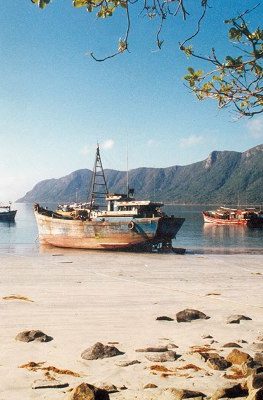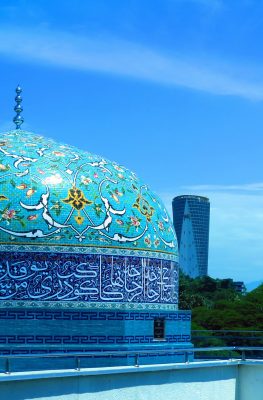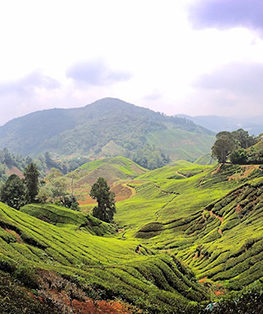Published on March 28, 2024
Visiting Viet Nam is like diving into a colourful explosion of delicious food, rich culture, white sand beaches, and friendly people. While there are endless things to do, your trip would only be complete with visiting some of the cultural wonders of Viet Nam. Experiencing the rich history of the Imperial Citadel of Thang Long and the ancient port town of Hoi An helps you better understand the welcoming Vietnamese people you will meet during your visit. Spending time in the Trang An Landscape Complex and the Phong Nha-Ke Bang National Park puts you in the middle of the most beautiful and biodiversity-rich nature you will ever see. Explore these cultural sites in Viet Nam and enjoy a trip you will never forget.
The Imperial Citadel of Thang Long
Located in the heart of Viet Nam’s capital is the Imperial Citadel of Thang Long. Dating back to the 11th century and the Ly Viet Dynasty, this complex of buildings represents Dai Viet’s independence. For the last 13 centuries, the site has been at the centre of the country’s political, royal, cultural, and military activity. The Chinese Tang Dynasty ruled the site of the imperial citadel from the 7th through the 9th centuries. Then, it became the Forbidden City during the Ly, Tran, Early Le, Mac, and Late Le dynasties. It then served as a political hub during the French colonial era. Visiting the Imperial Citadel of Thang Long lets you experience the blending of cultures throughout the centuries with artefacts and architecture from China, Champa, and France.
There are several points of interest to see when visiting. The Main Gate (Doan Mon) welcomes guests with five gates symmetrically placed along a central axis and a watchtower with three rolling arches. The North Gate (Cua Bac) is the only entrance that dates back to the Nguyen Dynasty. The Hanoi Flag Tower is where the National Flag was first raised to recognize the liberation of Nahoi in 1954. The Lady Pavilion features traditional Vietnamese architectural styles. The Kinh Thein Palace is where King Le Thai To ascended the throne in 1428.
Hoi An Ancient Town
The ancient trading port of Hoi An is situated on the north bank of the Thu Bon River on the coast of Viet Nam’s central Quang Nam Province. Its remarkable preservation embodies a melting pot of cultures. Dating back to the 15th century, Chinese-style wooden shophouses sit next to colourful French colonial structures. Next to them are traditional Vietnamese ornate tub houses. There is also an iconic Japanese pagoda and covered bridge dating back to the 18th century.
While the town is still active with residents, its primary trade is tourism. Visitors can wander the original cobblestone streets and immerse themselves in the history of this once-bustling Silk Road trading port. Many people find Hoi An’s quieter and slower pace a refreshing reprieve during their travels.
Trang An Landscape Complex
The diverse ecosystem of the Tran An Landscape Complex draws visitors from all over the world. This beautifully preserved piece of nature sits in the Ninh Binh Province of North Vietnam near the Hoa Lu ancient capital and Tam Diep City. Two unique ecosystems call the Trang An Landscape Complex home. There is the limestone mountain ecosystem that features karst peaks with vertical cliffs. This is paired with an aquatic ecosystem in the tropical and humid valleys. The complex has three protected areas: the Hoa Lu Special-Use Forest, Trang An-Tam Coc-Bich Dong Scenic Landscape, and Hoa Lu Ancient Capital.
Visiting the Trang An Landscape Complex is like walking back to a period before human evolution and development. Over 600 plant and 200 animal species call the area home, many rare or protected. Visitors can explore the complex by taking one of the boat tours that will explore the many waterways, caves, and grottos. There are also several ancient pagodas and temples that are still sacred sites for locals.
Phong Nha-Ke Bang National Park
As one of Viet Nam’s most visited cultural wonders, Phon Nha-Ke Bang is an adventure destination. Located in the Quang Binh province, the Annamite Mountain Range calls this national park home. While it is most famous for its world’s largest caves, there is much more to explore. The Phong Nha Cave and Paradise Cave are the most popular. Anyone can book a boat tour and see the natural rock formations that make this area one of the most beautiful cultural attractions in Viet Na. You can also see karst formations that have evolved over the last 400 million years, making them the oldest in Asia. In total, there are 104 km of caves. However, not all caves are open to the public due to conservation concerns.
Outside the caves, visitors can become one with the rich biodiversity by kayaking, hiking, and cycling the many trails through the dense tropical forests and open savanna. Just be sure to respect the park, as it represents some of the last explored ecosystems in the world. The rich biodiversity includes flora, fauna, and wildlife yet to be studied. Visitors looking for adventure will find the pristine nature and lack of touristy attractions here appealing. The locals are friendly and welcoming, giving you a memorable and personal experience with Vietnamese culture.
Explore the Cultural Attractions in Viet Nam
Viet Nam is a beautifully diverse country with a rich cultural history. Including these cultural sites in Viet Nam is necessary to have the whole experience. Walk through the ancient trading port of Hoi An and see what village life was like centuries ago. Tour the Imperial Citadel of Thang Long to learn about Viet Nam’s tumultuous political history that shaped the country and people into what they are today. Take a boat tour through the Trang An Landscape Complex to see diverse biodiversity like nowhere else. Finally, tour the Phong Nha-Ke Bang National Park caves to see the world’s largest caves.
Explore the cultural wonders in Viet Nam and the rich heritage by booking your next trip.






